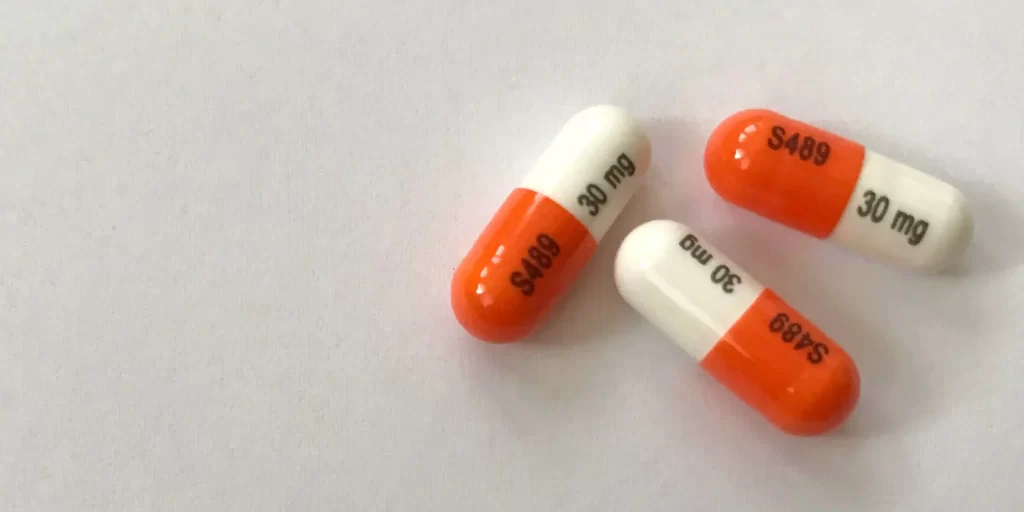How Long Does Vyvanse Stay in Your System?
Written by Renee Deveney
& Medically Reviewed by Dr. Trisha Sippel, PhD
Medically Reviewed
Up to Date
Last Updated - 6/17/2022
View our editorial policy
Vyvanse is a prescription drug used to treat attention-deficit hyperactivity disorder (ADHD) in adults and children, and binge eating disorder in adults. How long Vyvanse stays in your system depends on a variety of factors, including the dosage. The larger the dose, the longer the total amount of time it will stay in the system.
Duration of Effects of Vyvanse
Vyvanse works by stimulating the central nervous system to make a person more alert, have a greater attention span and have more energy. How long the effects of Vyvanse last depends on the dose that is taken. Vyvanse is a pro-drug, so it must be metabolized by the body first, before it can start to work. Once metabolized, the effects will last approximately 12 hours.
Vyvanse Half-Life
Once a drug enters your system and reaches its peak concentration in your blood, the half-life is the amount of time it takes for the concentration of the drug to be cut in half. The half-life of Vyvanse is based on its active ingredient, lisdexamfetamine. The half-life of lisdexamfetamine is less than an hour. It is converted to dextroamphetamine, which has a half-life of about 12 hours.
Vyvanse can be given in different doses: 10 mg, 20 mg, 30 mg, 40 mg, 50 mg, 60 mg or 70 mg. The dose that is given will not affect the half-life of the drug itself, as this is independent of the dose, but it will affect the total amount of time the drug stays in a person’s system.
If women are taking Vyvanse while breastfeeding, the Vyvanse half-life should be taken into consideration, as the active ingredient can be detected in breastmilk. Though there are no studies showing the effects this may have on the infant, a woman who is breastfeeding and taking Vyvanse should speak with her doctor.
Vyvanse Drug Test Detection Time
How long Vyvanse can be detected by a drug test depends on what is being tested. Common drug testing methods include urine, blood, saliva and hair screenings.
- Urine: Vyvanse is detected in a urine test for up to three days post-use.
- Blood: How long Vyvanse can be detected in blood depends mostly on its half-life, which is relatively short. Vyvanse will only show up on a blood test for up to 8 hours post-use.
- Saliva: Saliva drug tests are often used since the drug levels are usually similar or higher than those found in blood and it is much easier to collect. Vyvanse will show up on a saliva drug test up to 48 hours after use.
- Hair: A hair follicle test is used to detect a drug for longer than a few days after its use. Vyvanse will show up on a hair drug test up to 90 days after use.
Factors Affecting How Long Vyvanse Stays in Your System
How Vyvanse stays in your system will depend on a number of factors, including:
- Frequency and Amount of Use: How long Vyvanse stays in your system depends on how much you take and how often you take it. It is prescribed anywhere from 30–70 mg per day to treat ADHD. Taking a higher dose or taking it more often will increase the time it takes for it to be eliminated from your system.
- User Health & Activity Levels: In general, drugs are metabolized faster in people who are healthier and are more active. Exercising can affect a person’s basal metabolic rate, which can affect drug metabolism. The Vyvanse metabolism rate can also change with a person’s health. Vyvanse metabolites are secreted in the urine, therefore people who have kidney issues may take longer to rid Yyvanse from their system.
- Method of Use: Vyvanse can be taken by swallowing a pill, chewing a chewable tablet or opening the capsule and mixing it with a liquid or yogurt. All of these routes should give a similar delivery of the drug, if taken as directed. When mixing it with a liquid or yogurt, the mixture should be taken right away, as it will otherwise start to break down and not as much drug will be delivered.
- Presence of Other Drugs: The amount of time it takes Vyvanse to get out of your system can also depend on if you are taking other drugs. The metabolism of Vyvanse can be affected by MAOI antidepressants, Urinary alkalinizing agents and tricyclic antidepressants, which will tend to increase the availability of the drug.
Can Vyvanse Cause a False Positive Drug Test?
Yes, Vyvanse can cause a false positive drug test. Vyvanse is metabolized into an amphetamine and therefore will be detected on most standard drug tests that test for amphetamines. A person taking Vyvanse should inform the testing center to avoid a false positive as a result.
Error: Contact form not found.
How is Vyvanse Metabolized in the Body?
Vyvanse is made up of the drug lisdexamfetamine, which is a pro-drug of dextroamphetamine. Vyvanse must be broken down or metabolized into dextroamphetamine for it to take effect. Vyvanse is metabolized by red blood cells and excreted in the urine.
Vyvanse is an addictive substance that can be dangerous if misused. If you or a loved one are affected by a substance use disorder, The Recovery Village Ridgefield can help. To learn more about our comprehensive treatment plans, call today to speak with a representative.
Sources
Food and Drug Administration. “Vyvanse Prescribing Information.” 2017. Accessed August 5, 2019.
Drugs.com “Drug Half-life Explained.” March 8, 2019. Accessed August 5, 2019.
Drummer, Olaf H. “Drug Testing in Oral Fluid.” The Clinical Biochemist Reviews, August 2006. Accessed August 5, 2019.
Speakman, J.R.; Selman, C. “Physical activity and resting metabolic rate.” The Proceedings of the Nutrition Society, August 2003. Accessed August 5, 2019.
View Sources
Food and Drug Administration. “Vyvanse Prescribing Information.” 2017. Accessed August 5, 2019.
Drugs.com “Drug Half-life Explained.” March 8, 2019. Accessed August 5, 2019.
Drummer, Olaf H. “Drug Testing in Oral Fluid.” The Clinical Biochemist Reviews, August 2006. Accessed August 5, 2019.
Speakman, J.R.; Selman, C. “Physical activity and resting metabolic rate.” The Proceedings of the Nutrition Society, August 2003. Accessed August 5, 2019.
Authorship






